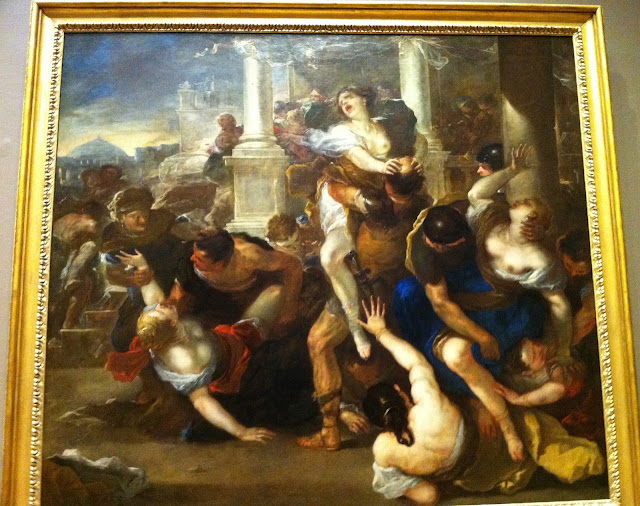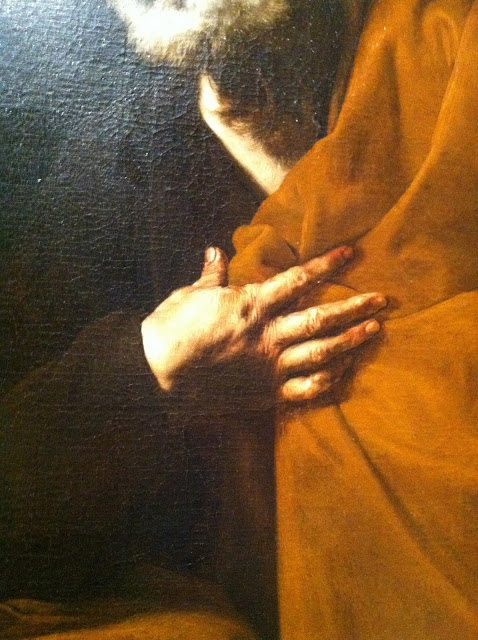ART INSTITUTE OF CHICAGO
CHICAGO, IL
There are few places on earth that I have visited that move me like the Art Institute of Chicago. I am drawn to the French Impressionist; Monet, Renoir, Pissarro, Cezanne, Boudin, Van Gough and others. Standing face to face with these masterpieces literally has brought tears to my eyes during the past two visits. There are so many masterpieces here that you can only wonder how they all were assembled in one place; Chicago. I am happy to share these photos on my blog. These photos were taken with my iPhone on a cold winter day in January. ENJOY!
In a time of change as Emperor Napoleon III of France rebuilt Paris and waged war, the Académie des Beaux-Arts dominated French art during the middle of the 19th century. The Académie was the preserver of traditional standards for French painting, both in content and style. Historical subjects, religious themes, and portraits were valued (landscape and still life were not), and the Académie preferred carefully finished images which looked realistic when examined closely. Colour was somber and conservative, and the traces of brush strokes were suppressed, concealing the artist's personality, emotions, and working techniques.
The Académie had an annual, juried art show, the Salon de Paris, and artists whose work was displayed in the show won prizes, garnered commissions, and enhanced their prestige. The standards of the juries represented the values of the Académie, represented by the works of such artists as Jean-Léon Gérôme and Alexandre Cabanel. Some younger artists painted in a lighter and brighter manner than painters of the preceding generation, extending further the realism of Gustave Courbet and the Barbizon school. They were more interested in painting landscape and contemporary life than in recreating scenes from history. Each year, the works they submitted to the Salon jury were rejected in favour of works by artists faithful to the approved style. A group of young realists, Claude Monet, Pierre-Auguste Renoir, Alfred Sisley, and Frédéric Bazille, who had studied under Charles Gleyre, became friends and often painted together. They gathered at the Café Guerbois, where the discussions were often led by Édouard Manet, whom the younger artists greatly admired. They were soon joined by Camille Pissarro, Paul Cézanne, and Armand Guillaumin.[2]
In 1863, the jury rejected Manet's The Luncheon on the Grass (Le déjeuner sur l'herbe) primarily because it depicted a nude woman with two clothed men at a picnic. While nudes were routinely accepted by the Salon when featured in historical and allegorical paintings, the jury condemned Manet for placing a realistic nude in a contemporary setting.[3] The jury's severely worded rejection of Manet's painting appalled his admirers, and the unusually large number of rejected works that year perturbed many French artists.
After seeing the rejected works in 1863, Emperor Napoleon III decreed that the public be allowed to judge the work themselves, and the Salon des Refusés (Salon of the Refused) was organized. While many viewers came only to laugh, the Salon des Refusés drew attention to the existence of a new tendency in art and attracted more visitors than the regular Salon.[4]
Artists' petitions requesting a new Salon des Refusés in 1867, and again in 1872, were denied. During the latter part of 1873, Monet, Renoir,Pissarro, and Sisley organized the Société Anonyme Coopérative des Artistes Peintres, Sculpteurs, Graveurs ("Cooperative and Anonymous Association of Painters, Sculptors, and Engravers") for the purpose of exhibiting their artworks independently. Members of the association, which soon included Cézanne,Berthe Morisot, and Edgar Degas, were expected to forswear participation in the Salon. The organizers invited a number of other progressive artists to join them in their inaugural exhibition, including the older Eugène Boudin, whose example had first persuaded Monet to adopt plein air painting years before.[5] Another painter who greatly influenced Monet and his friends, Johan Jongkind, declined to participate, as did Manet. In total, thirty artists participated in their first exhibition, held in April 1874 at the studio of the photographer Nadar.
The critical response was mixed, with Monet and Cézanne receiving the harshest attacks. Critic and humorist Louis Leroy wrote a scathing review in the newspaper Le Charivariin which, making wordplay with the title of Claude Monet's Impression, Sunrise (Impression, soleil levant), he gave the artists the name by which they would become known. Derisively titling his article The Exhibition of the Impressionists, Leroy declared that Monet's painting was at most, a sketch, and could hardly be termed a finished work.
He wrote, in the form of a dialog between viewers,
- Impression—I was certain of it. I was just telling myself that, since I was impressed, there had to be some impression in it ... and what freedom, what ease of workmanship! Wallpaper in its embryonic state is more finished than that seascape.[6]
The term "Impressionists" quickly gained favour with the public. It was also accepted by the artists themselves, even though they were a diverse group in style and temperament, unified primarily by their spirit of independence and rebellion. They exhibited together—albeit with shifting membership—eight times between 1874 and 1886.
Monet, Sisley, Morisot, and Pissarro may be considered the "purest" Impressionists, in their consistent pursuit of an art of spontaneity, sunlight, and colour. Degas rejected much of this, as he believed in the primacy of drawing over colour and belittled the practice of painting outdoors.[7] Renoir turned away from Impressionism for a time during the 1880s, and never entirely regained his commitment to its ideas. Édouard Manet, despite his role as a leader to the group, never abandoned his liberal use of black as a colour, and never participated in the Impressionist exhibitions. He continued to submit his works to the Salon, where his painting Spanish Singer had won a 2nd class medal in 1861, and he urged the others to do likewise, arguing that "the Salon is the real field of battle" where a reputation could be made.[8]
Among the artists of the core group (minus Bazille, who had died in the Franco-Prussian War in 1870), defections occurred as Cézanne, followed later by Renoir, Sisley, and Monet, abstained from the group exhibitions in order to submit their works to the Salon. Disagreements arose from issues such as Guillaumin's membership in the group, championed by Pissarro and Cézanne against opposition from Monet and Degas, who thought him unworthy.[9] Degas invited Mary Cassatt to display her work in the 1879 exhibition, but he also caused dissension by insisting on the inclusion of Jean-François Raffaëlli, Ludovic Lepic, and other realists who did not represent Impressionist practices, causing Monet in 1880 to accuse the Impressionists of "opening doors to first-come daubers".[10] The group divided over the invitation of Paul Signac and Georges-Pierre Seuratto exhibit with them in 1886. Pissarro was the only artist to show at all eight Impressionist exhibitions.
The individual artists achieved few financial rewards from the Impressionist exhibitions, but their art gradually won a degree of public acceptance and support. Their dealer, Durand-Ruel, played a major role in this as he kept their work before the public and arranged shows for them in London and New York. Although Sisley would die in poverty in 1899, Renoir had a great Salon success in 1879. Monet became secure financially during the early 1880s and so did Pissarro by the early 1890s. By this time the methods of Impressionist painting, in a diluted form, had become commonplace in Salon art.[11]


































































No comments:
Post a Comment
Please leave your comments and feedback